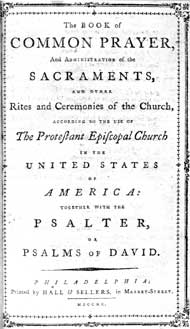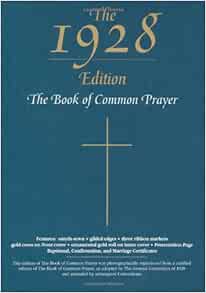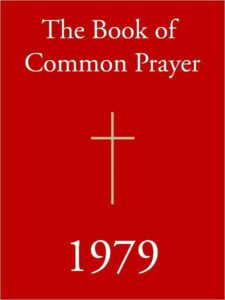
What is the Book of Common Prayer
“The Book of Common Prayer is the official book of worship of the Episcopal Church. The BCP provides liturgical forms, prayers, and instructions so that all members and orders of the Episcopal Church may appropriately share in common worship. Anglican liturgical piety has been rooted in the Prayer Book tradition since the publication of the first English Prayer Book in 1549. The first American BCP was ratified by the first General Convention of the Episcopal Church in 1789. “
Ratification of BCP in American Church
“By the Bishops, the Clergy, and the Laity of the Protestant Episcopal Church in the United States of America, in Convention, this Sixteenth Day of October, in the Year of Our Lord One Thousand Seven Hundred and Eighty-Nine.
This Convention having, in their present session, set forth A Book of Common Prayer, and Administration of the Sacraments, and other Rites and Ceremonies of the Church, do hereby establish the said Book: And they declare it to be the Liturgy of this Church: And require that it be received as such by all the members of the same: And this Book shall be in use from and after the First Day of October, in the Year of Our Lord one thousand seven hundred and ninety.”
Ratified Versions of the BCP
The 1789 Book of Common Prayer was in use in the United States from 1790 until 1892. During that time, it was subject to minor changes by each General Convention. These changes were then reflected in the next “Standard Edition” of the Book of Common Prayer in the years 1793, 1822, 1832, 1838, 1845, and 1871.
The 1892 Prayer Book was a conservative revision, meaning that little of substance was changed from its predecessor, the 1789 BCP. Perhaps for this reason its tenure was relatively short, being replaced by a much more extensive revision in 1928.
The 1928 revision of the Book of Common Prayer was, like all revisions, a long time in the making, having been started some fifteen years earlier, in 1913. The commission’s work was substantially complete by 1922 and resulted in a proposed book in 1925. Many of the changes had been proposed but not adopted for the 1892 revision.
The final 1928 revision exhibited and expanded ecumenical awareness and a conscious attempt to apply historical liturgical knowledge and insights toward renewal of the church in the midst of a fast-changing secular world. For example, the Rev. Dr. Ruth Meyers, a scholar and professor at the Church Divinity School of the Pacific, notes, “When the 1928 prayer book was being finalized, airplane travel was just becoming a thing. Almost at the last minute, a prayer for those who travel by air was slipped in. That’s not something that would have been there 10 or 20 years before because that was not an experience. “
The 1979 BCP in use currently was ratified amidst considerable controversy and resistance among Episcopalian clergy and lay people. Some members quit the church in protest. The new book was particularly criticized for its position of the status of women as reflected in changes in the marriage ceremony. In the new prayer book the bride is asked to “love. . .comfort. . . honor and keep” her husband but no longer to “obey,” a word which increasing numbers of couples have on their own edited out of the rite in recent years.



